Features and varieties of Pepperoni pepper, its cultivation and areas of application
Pepperoni means pepper in Italian. This common name belongs to various varieties of bitter and sweet capsicums.
In the article we will talk about why pepperoni is considered special, what it is, how it can be used and what to do to grow this vegetable well.
What kind of pepper is this
Pepperoni is the main type of pepper in Greek and Italian cuisine.. Its second name is Tuscan pepper. It received this name due to its small size.
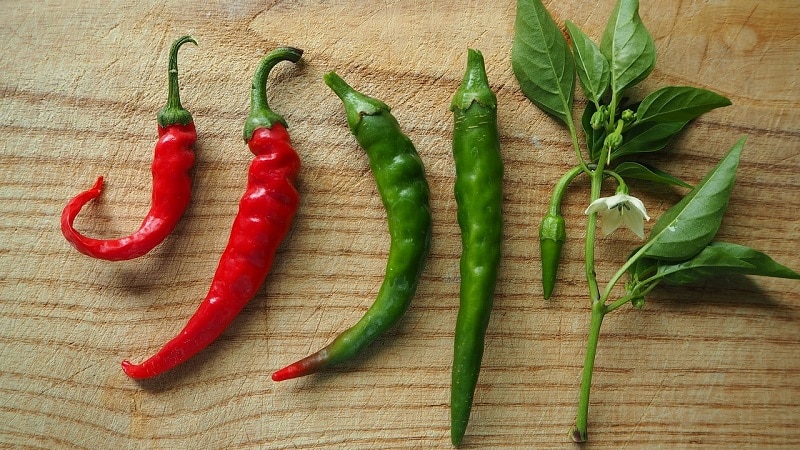
Pepperoni is grown both on an industrial scale and for personal use.. The plants bloom modestly, but bear fruit abundantly. Some varieties can bear fruit for five or more years.
What it looks like, how and where it grows
Pepperoni is not much different in appearance from chili peppers. Pepperoni peppers vary in size and shape. Depending on the variety, the fruits can be curved, cone-shaped, straight, elongated or round. Color green, red, purple, yellow.
There are agricultural and ornamental varieties. On an industrial scale and Four species are grown in summer cottages:
- Classic sweet pepperoni is an early-ripening red variety for making different types of pizza and sandwiches, as well as preparations for the winter.
- Hot red - hot pepper for marinades, salads, soups, sauces.
- Green – slightly hot with small fruits up to 10 cm.
- Yellow is a juicy sweet variety of yellowish-orange color, ripening 90-100 days after growth.
Indoor crops bred by crossing and belong to the hybrid vegetable capsicums.
Reference. All types of capsicums originate from wild plants that are still found in subtropical and tropical areas of the American continent. Each species is divided into separate subspecies, on the basis of which many varieties are bred.
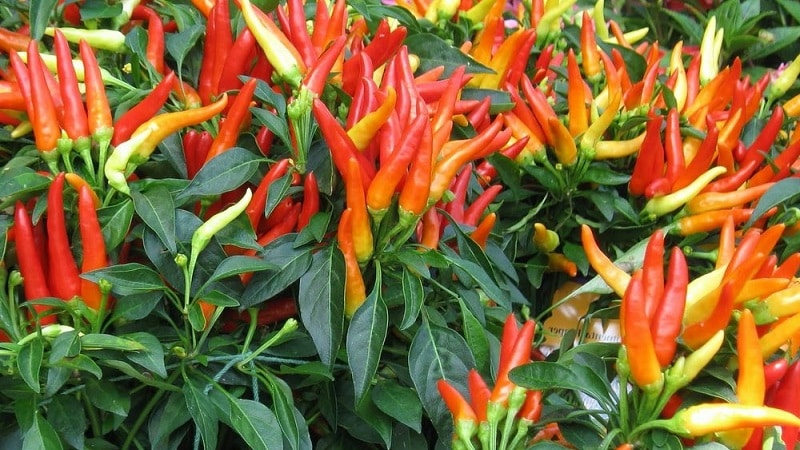
Taste and aroma, spiciness
Different varieties of capsicum have completely different tastes. There are sweet, hot and bitter pepperoni. Green peppers have the most pronounced aroma, but their taste is much milder than red peppers.
The pungency and pungency of a vegetable is determined by the amount of capsaicin - a unique substance found in the plant. Different varieties provide both mild and strong heat. Thanks to its spiciness, pickled pepperoni is one of the main ingredients in preparing pizza, soups, salads, vegetable and meat dishes.
Peculiarities
Hot pepper has excellent properties. Residents of Mexico, India and Thailand claim that this particular vegetable helps them maintain good health.
Composition, properties, KBJU
Capsaicin is a plant alkaloid, which is part of pepperoni pepper, determines the taste and aromatic properties of the fruit. In addition to the alkaloid component, pepperoni contains: vitamins C, PP, proteins, sugar, carotene, vegetable and essential oils.
Pepper also contains (per 100 g of product):
- proteins - 1.4 g;
- fats - 0.6 g;
- carbohydrates - 5.9 g;
- calories - 30 kcal.
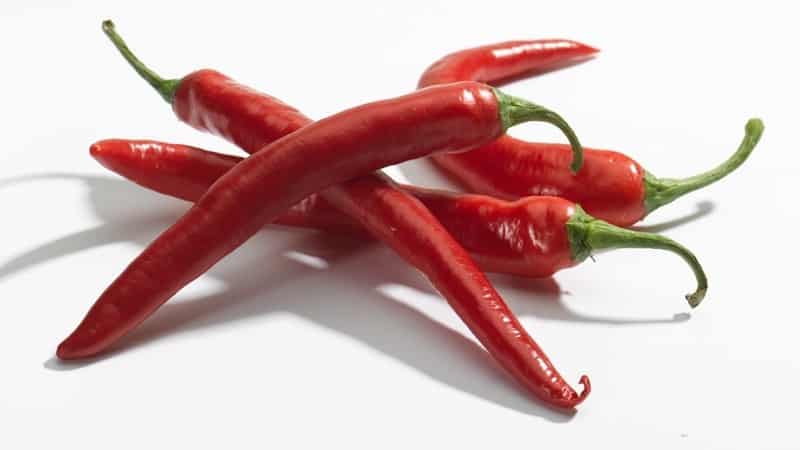
Harm and benefit
The main active ingredient is capsaicin:
- has a pronounced antibacterial and analgesic effect;
- supports the immune system;
- prevent infections;
- improves digestion;
- accelerates metabolic processes and participates in fat burning.
Be careful with hot pepperoni, because when capsaicin gets on the mucous membranes of the nose or eyes, it causes severe burning and discomfort.
Other types of hot peppers:
What are the benefits of cayenne pepper and how to grow it
What is good about the Ogonyok pepper variety and the secrets of growing it
Contraindications
People with cardiovascular diseases It is recommended to use pepperoni with caution. Its active components can cause serious harm to health.
Excessive use of this spice Various gastrointestinal diseases may worsen. Pepper is strictly prohibited for people with ulcers. It is recommended to limit the consumption of hot pepper to people with diabetes and kidney disease.
Also this product May be harmful if allergic and intolerance to its constituent components.
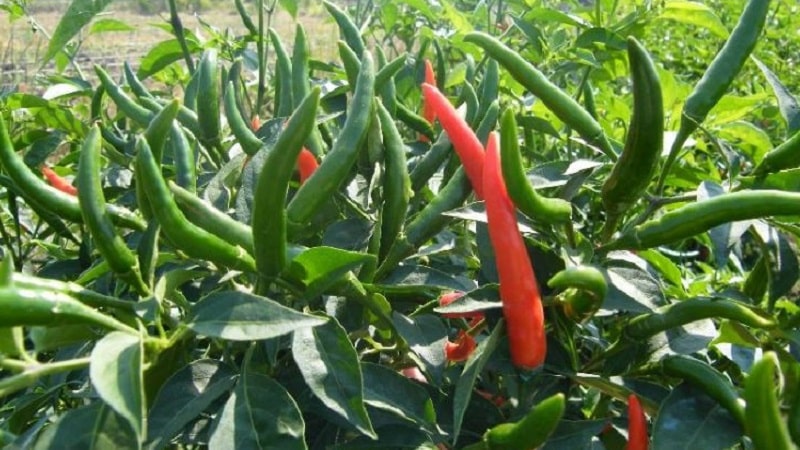
Kinds
Many early ripening varieties have yellow and light green color. The pulp of such varieties is usually sweet and juicy.
Depending on the variety, mid-season peppers change color from yellow to orange and from purple to red.
Red sweet varieties They look like berries or squash. Due to its high fiber content and low fat content, this variety is especially useful in dietary nutrition.
Ultra-early ripening low-growing varieties at the beginning of ripening, the fruits are cream or purple in color. At the stage of full ripening, ripe peppers become bright red in color with a pronounced pungent taste.
Application
As a seasoning, hot pepperoni adds a piquant taste to marinades, fish, and soups.. In addition, this seasoning is used in preparing side dishes.
Thanks to its beneficial properties pepperoni has many therapeutic properties:
- The antibacterial effect helps in the fight against ENT diseases.
- The anti-inflammatory effect eliminates intestinal infections.
- Improves the condition of patients suffering from bronchial asthma.
- Reduces pain in pathologies of the musculoskeletal system.
- Reduces blood pressure at the initial stage of hypertension.
- Solves some problems associated with skin diseases.
- Used as an external cosmetic to get rid of cellulite and hair loss.
Growing
Pepperoni early, medium and late varieties can be grown in open and closed ground. Most often, seedling cultivation is used.
Features of care
Before choosing any variety for planting, decide what level of heat you need. This will help you purchase the right variety for planting.
Important! To grow any variety of pepperoni, you need a place protected from direct sunlight, well-lit, and fertile, loose soil.
Before flowering, peppers should be watered once a week with warm water., then during the period of fruit ripening 2-3 times a week. For more luxuriant tillering, young plants are pinched, and for the development of large fruits, some of the flowers are removed and a bush of the plant is formed into two trunks.
Fertilizing is carried out with a solution horse manure, mullein or mineral fertilizers intended for peppers, eggplants and tomatoes. The procedure is performed once every 10-14 days.
Pepper bushes regularly hill up, loosen and weed. Tall pepper varieties require support.
Replant bushes after harvesting Harvesting should be done carefully so as not to damage the root system.
Attention! If pepper is grown in an apartment, it must be supplemented with phytolamps.
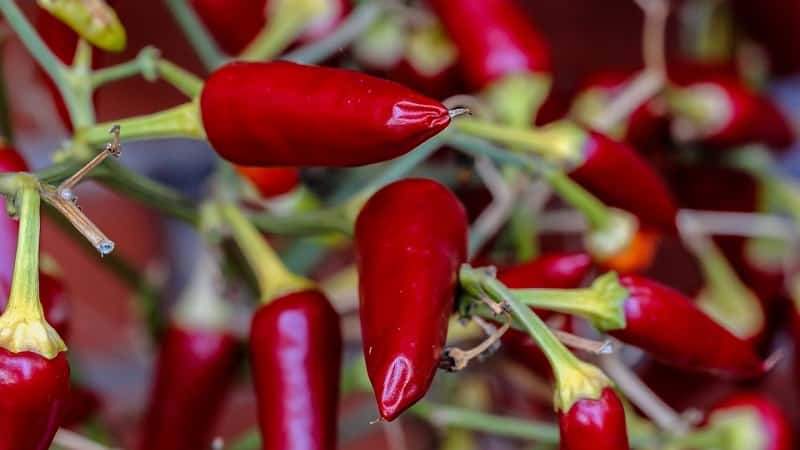
Diseases and pests
Spider mites often appear on seedlings in greenhouses. If you do not pay attention to this, the plant may die. The affected bushes are sprayed with a soap solution or with the preparations “Aktellik”, “Akarin”, “Fitoverm”.
At high humidity aphids can settle on adult plants. To combat this pest, seedlings are sprayed with a solution of onion peels or potato tops. In case of severe damage, chemical preparations “Fitoverm”, “Aktaru”, “Pegasus” are used.
In the fight against whitefly organophosphorus solutions are used. Affected plants are sprayed several times in one season.
Poor soil and errors in cultivation, high humidity can cause fungal diseases. To avoid this, pay special attention to growing seedlings, following the watering regime and soil cultivation rules.
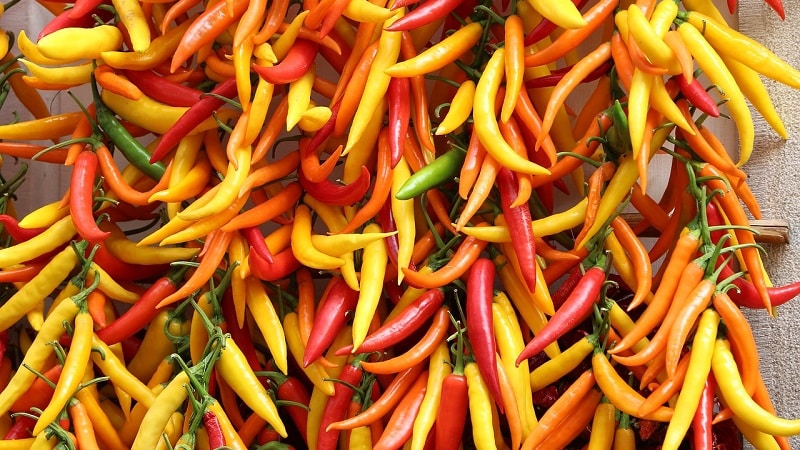
Collection and storage
The harvest is harvested at different stages of fruit ripening. Unripe vegetables are canned or placed in a dark room to ripen. If stored correctly, they ripen within two months. Fully ripe, normal-sized peppers are harvested every week before the first frost.
Before storing vegetables, they are sorted and sorted, getting rid of damaged and rotten ones. For storage, different containers are used - boxes, paper or plastic bags.
This is interesting:
What you shouldn’t plant hot pepper next to: growing secrets
Preparations for the winter
Because the pepperoni is a natural antiseptic, it is ideal for canning without sterilization.
Pickled peppers are an excellent preparation for the winter. Used in preparing vegetable, fish and meat dishes. There is a recipe for making hot pickled peppers in almost every national cuisine. For preparations, you need fruits with a dense peel, without damage. The pickled vegetable is consumed as an independent snack or as a seasoning for sauces and salads.
Conclusion
Now you know what healing properties and delicious taste qualities a small, but very healthy and valuable vegetable has - pepperoni pepper.
With proper care of the plantings, you will have a good harvest, which can be used in cooking or used as a medicine. The main thing is to remember about possible contraindications and not to overuse the product.